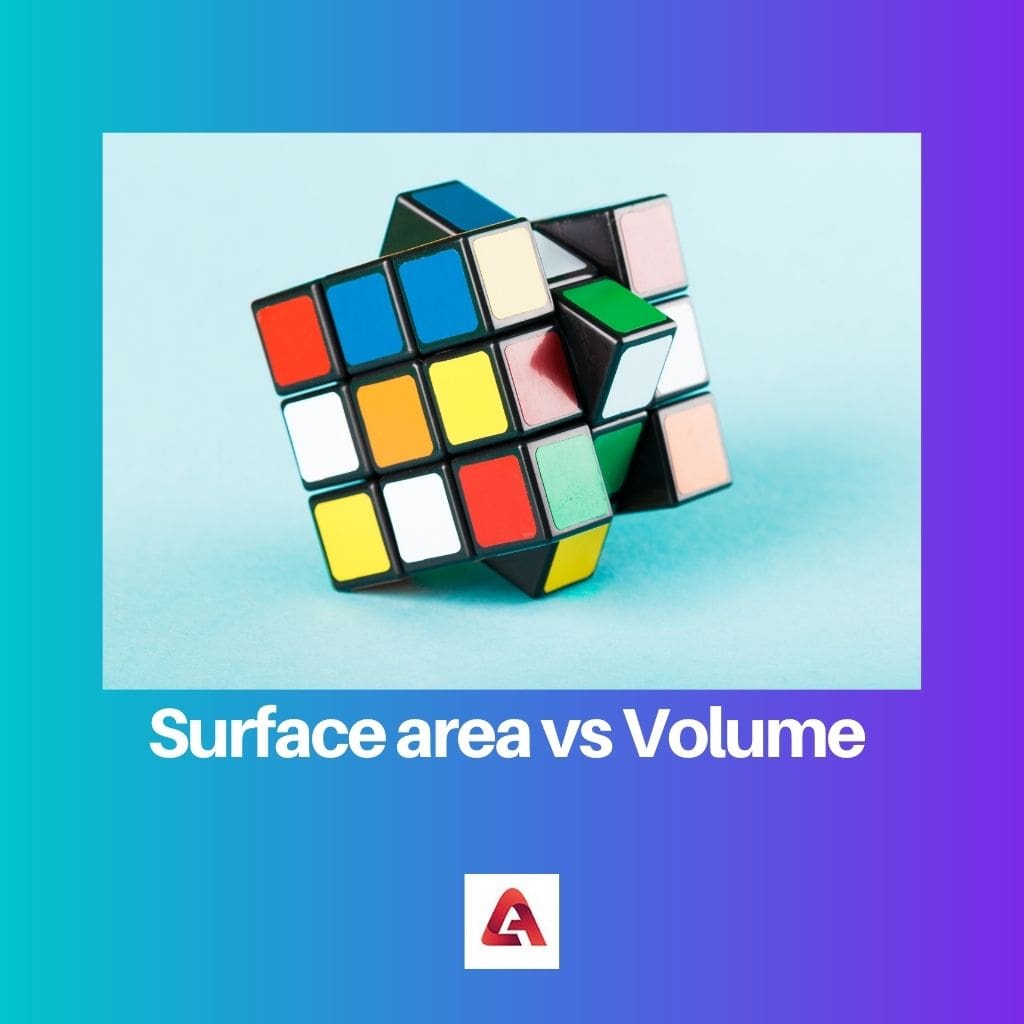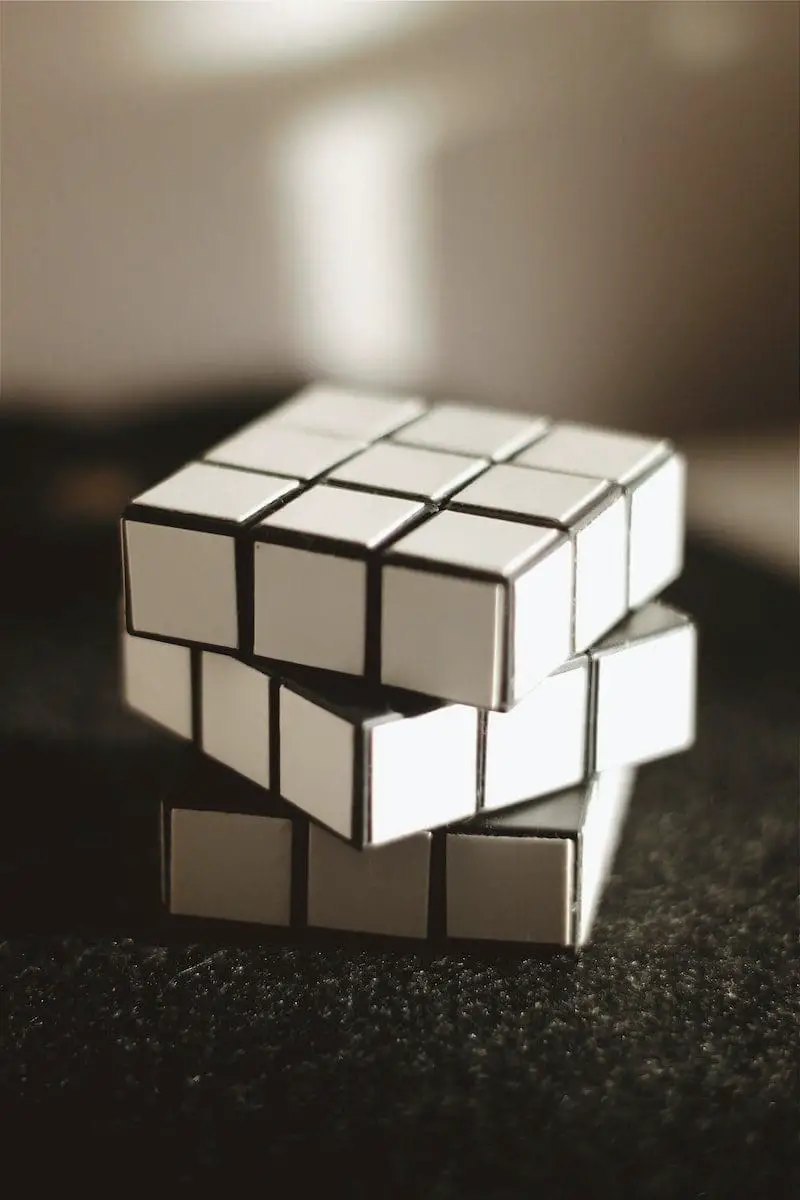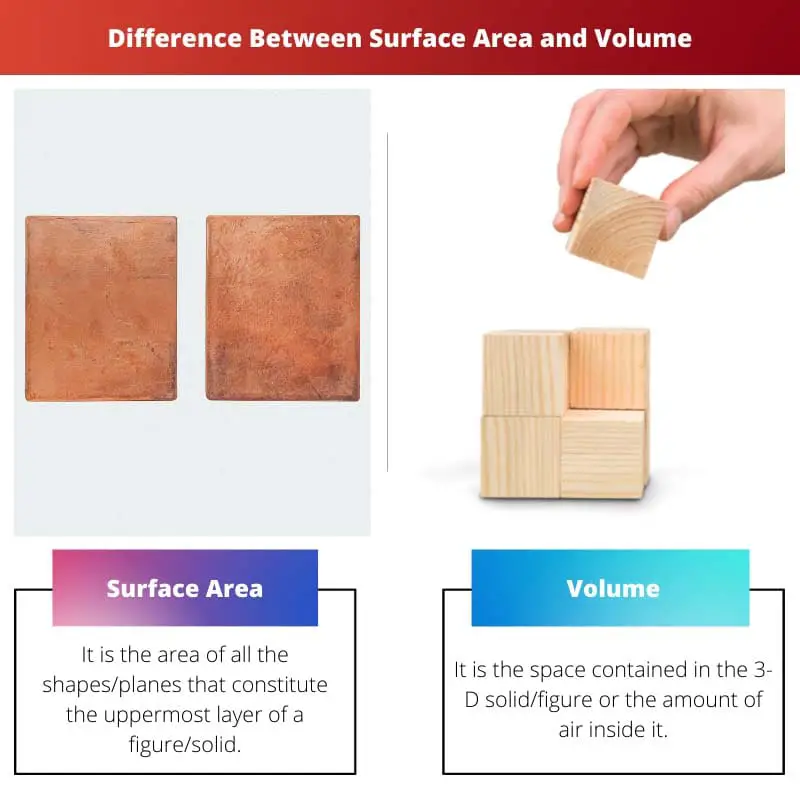Mathematical methods have a broad scope in almost every field, be it Economics, Physics, Geography, or any other. Detailed knowledge and correct usage of Surface Area and Volume are essential to excel and achieve perfection.
Both concepts become significant while solving real-life measurement problems and are studied under the Mensuration unit. Methods of Integration find applications in calculating the Area and Volume of irregular and complex surfaces.
Key Takeaways
- Surface area measures the total exterior area of an object, whereas volume measures the amount of space an object occupies.
- Surface area is expressed in square units, while volume is expressed in cubic units.
- Surface area influences an object’s environmental exposure, while volume determines its capacity or size.
Surface Area vs Volume
The difference between Surface Area and Volume is that the Surface Area measures the area occupied by the uppermost layer of a surface. Put differently; it is the area of all the shapes/planes that make up the figures/solids. In contrast, volume measures the carrying capacity of a figure/shape or the space enclosed within the formation.

Comparison Table
| Parameter of Comparison | Surface Area | Volume |
|---|---|---|
| Definition | It is the area of all the shapes/planes that constitute the uppermost layer of a figure/solid. | It is the space contained in the 3-D solid/figure or the amount of air inside it. |
| Dimension | It is a 2-Dimensional concept. The answer is always in a unit square like m² or cm². | It is a 3-Dimensional concept. The answer is always in a unit cube like m³ or cm³. |
| Is it calculated for? | Surface Area can be calculated for any figure in the plane or space. | Volume is calculated for solids only because they have three dimensions. |
| Real-life examples | We find the surface area to estimate the size of the walls to be painted to calculate the costs. | We find Volume to estimate how many goods can be kept in a store. |
| Methods to calculate | By integration using the arc or the revolution of arc concept for complex figures/solids. | They are integrated using the disk, washer, or cylindrical shells methods. Some formulas are exceptional cases of the way, as in: For cube = S*S*S. |
| Some formulas are predetermined as in: For Square= S*S and Sphere=4πr². |
What is Surface Area?
Surface Area is the total area covered by the surface. If we convert our character into a 2-D Plane and then calculate the entire area, we get the Surface Area.
It can be calculated for any figure; for a one-dimensional line segment, the surface area is zero.
We’ll always have positive values as the area is a scalar with only magnitude. Whatever the dimension of the surface, the area has two dimensions, and Hence, it would have units like m² or cm² or mm².
It is a widely used concept by Architects and is very important and helpful for even the common man. For example, to estimate the time, speed or cost of painting walls, laying down fences or delimiting the constituencies, etc.
Some Formulas:
- Square: S*S
- Rectangle: L*B
- Sphere. : 4πr²
- Cone. : πr(l+r)
Several Methods to find the Area of complex figures were formulated: The method to find the Surface Area is to visualize the solid or 3-D object as a revolution of a plane curve. For example, we can generate a sphere by revolving a semi-circle.
In this case, the area is the total of all curved surface Areas of tiny cylindrical pieces that can be cut. Here is when integration comes to play; area equals integration of 2πf(x)√(1+(f'(x))²) concerning x from x=a to x=b.

What is Volume?
Volume is the carrying capacity or the amount of air contained inside a solid/figure. It can be calculated for figures that have more than 2 dimensions.
We’ll have positive volume values because it is a scalar with only magnitude. The Volume is 3-Dimensional, and Hence, it would have units like m³ or mm³ or cm³.
It is widely used in businesses to estimate storage capacity and in scientific equipment like beakers, syringes, etc. For example, to store grain sacks or to measure medicine.
Some Formulas:
- Cube: S*S*S
- Cuboid: L*B*H
- Sphere. : ( 4/3) πr³
- Cone. : (1/3)πr²h
Methods to Calculate Volume of complex and irregular figures:
- Volume by slicing: If the cross-sectional area of a solid is known, we can find the volume by integrating the area as a variable’s function for the variable’s domain.
- Volume by disks: By visualizing the solids as a revolution of a plane figure. We can then estimate the cross-sectional area of the small and small pieces of the solid. The volume would be the integration of π(f(x))² concerning x for the domain of x.
- Volume by washers: In this case, our solid of revolution is formed by a region between two planes/curves. The cross-sectional area would be washer shaped, and Volume would be the integration of π[(f(x))²- (g(x))²] concerning x for the domain of x.
- Volume by Cylindrical Shells: We can also solve the above problems without calculating the cross-section area by visualising our solid as a body of encircled fragile cylinders. The Volume is the integration of 2πxf(x) concerning x for the range of x.

Main Differences Between Surface Area and Volume
- The Surface Area is the total area of the planes that form a surface/shape, while Volume is the space enclosed within a figure/shape/surface.
- The Surface Area is a 2-Dimensional concept with units m², cm² or mm², whereas Volume is a 3-Dimensional concept with m³, cm³ or mm³ as units.
- Surface Area can be found for 2-D figures like circles, squares, and rectangles, but Volume cannot be found for them. At the same time, both can be found for 3-D solids/figures like Cube, Sphere, Cylinders, or Cones.
- Surface Area is found for estimating the area of walls to be painted, while Volume is found to estimate storage capacity within walls.
- The area is calculated by integrating the arc or the revolution of an arc (depending on the figure), while Volume is calculated by integrating the revolution of a surface. These methods are used while considering very complex functions and are a part of higher-level studies.






